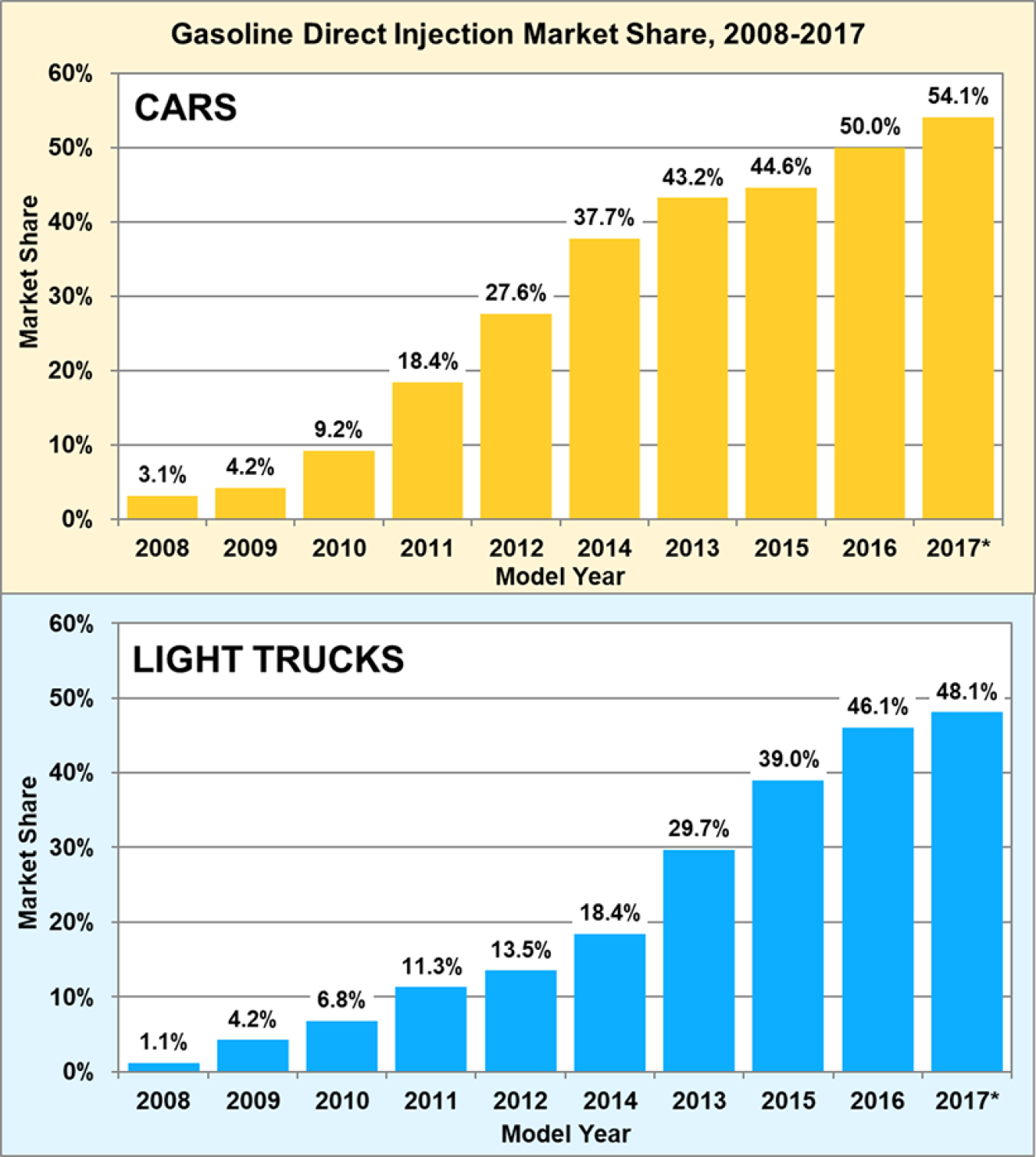In model year 2017, 54.1% of cars and 48.1% of light trucks used gasoline direct injection.
February 26, 2018Gasoline direct injection (GDI) injects fuel at high pressure directly into the combustion chamber to improve cooling of the air/fuel charge within the cylinder, allowing for higher compression ratios to be used. Increasing compression ratio increases vehicle efficiency. Over the last ten years, manufacturers have been increasingly turning to gasoline direct injection to meet strict fuel economy requirements. Gasoline direct injection is often paired with turbocharging which has allowed manufacturers to downsize engines without sacrificing performance. In model year 2017, 54.1% of cars and 48.1% of light trucks used gasoline direct injection.

* Data for 2017 are preliminary, based on projected production data from the automakers.
Note: The definition of cars and light trucks is the same definition as in the Corporate Average Fuel Economy rulemaking. Thus, the car category includes cars, station wagons, and small 2-wheel drive sport utility vehicles (SUV). The light truck category includes pickups, vans, minivans, 4-wheel drive SUV, and large SUV.
Source: U.S. Environmental Protection Agency, Light-Duty Automotive Technology, Carbon Dioxide Emissions, and Fuel Economy Trends: 1975 Through 2017, EPA-420-R-18-001, January 2018.

